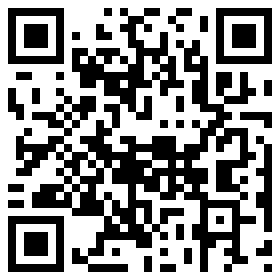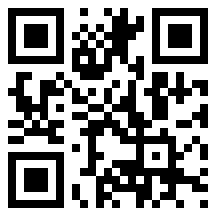Descartian logic for new multiliteracies
I'm starting my fourth rendition of my annual TESOL pp107 course on Multiliteracies for Collaborative Learning Environments. This course has several components, among which:
- A static Web 1.o page at http://www.homestead.com/prosites-vstevens/files/efi/papers/tesol/ppot/portal2007.htm
- A Moodle page at http://www.opensource.idv.tw/moodle/course/view.php?id=23. A big problem with the Moodle this time around is that due to an incompatibility between the most recent versions of Moodle and the SQL dbase running on the server that's graciously hosting us in Taiwan, backup no longer works here, so I'm hesitant to put much effort here until this is resolved.
- Something new, and interesting, a PageFlakes portal at: http://www.pageflakes.com/vancestevens/13498617 . I find I like working with PageFlakes. It has an easy and intuitive interface - you simply select widgets and embed them in your page. One of these works on RSS feeds, so you can display recent content on your PageFlakes portal of whatever sites you want to follow.
The course is about how new literacies are emerging through increasing digitization of communications media and seeks to inculcate the concepts not through a top down explanation of what multiliteracies is or are, but by empowering participants with a familiarity with the tools and through use of these tools stimulate them into making discoveries about how these tools might be applied to their own social and professional lives. These lives overlap of course, learning being essentially a social phenomenon.
The problem in beginning this course ... and I'm not sure about this, I'm only speculating ... but the problem is that it takes a while for participants to 'get it'. But when they do 'get it' it's transformative. That is, the light comes on, and perception of Internet and how it potentially can be used is indelibly altered.
So what is there to 'get'? The course is only a few weeks long. Therefore, participants have to jump in and use the tools. Traditional courses in the TESOL series are run through a Desire to Learn portal. This structures courses didactically; that is, the 'teacher' will propose material to be absorbed in a certain order, and interaction with students takes place through threaded discussion lists. Some but not all students are familiar with LMS/CMS, learning/courseware management systems. Prior experience with LMS/CMS not withstanding, the instructional model is familiar and intuitive, so most courses plow ahead within this paradigm.
I found the D2L lists to be robust in my first rendition of this course but I had assigned a text to read, and this was a good way to discuss it. Still I wasn't happy that we were truly exercising the concepts that we were scrutinizing. Threaded discussion lists are derivative of print media. They are effective in the exchange of prose discourse. But multiliteracies implies much more than that.
In the years that I have taught this course I have evolved my understanding of what multiliteracies are and how best to learn about them. After the second year facilitating this course I abandoned the printed text (i.e. demoted it to optional reading). The main reason for this was that it was not available to all participants, but also, besides becoming dated, as an instance of print media, it was bogging us into talking around the subject. I felt there was more to be gained from doing not as we said, but doing as we did.
I was meanwhile developing a greater understanding myself about how blogs worked and were organized around folksonomies, and how they could be plumbed for knowledge in a distributed learning network. Last year, my third teaching the course, I had each participant not only keep a blog, but follow each other's blogs through Bloglines. This could almost have replaced the threaded discussion lists in substance though perhaps not in logistics, so we continued to do both. This year however, having gained even more experience through the writingmatrix project, and also having heard a couple of David Weinberger's excellent presentations on how folksonomies can be utilized to draw information from meta-tagged Internet resources, I decided with this year's course to take last year's concept a step further and base the most current syllabus on interactions among participants through aggregation of tagged blog entries.
In order to do this I had to issue each participant with a set of tools. But as facilitators are mere cat herders in distributed learning settings, to issue here means to offer, and not all participants are at first predisposed to appreciate the importance of what is being offered. Here is the rationale behind what I have in mind.
First, I feel it is crucial to the development of community that participants get to know one another, and for every other rendition of this course, I've created a community page with everyone's picture and brief biodata. However this year I decided to set up a wiki for that and encourage the participants to fill in their own spaces. Now several days into the course, some of the participants are starting to do that; e.g.
http://portfolios2007.wikispaces.com/BobbiStevens
http://portfolios2007.wikispaces.com/GwenCary
http://portfolios2007.wikispaces.com/SimonGibbs
and of course yours truly at http://portfolios2007.wikispaces.com/VanceStevens
In setting this up, one page per participant, I took it upon myself to tag each page pp107tesol (among other things; the complete tag set I used was aggregation, call, folksonomies, multiliteracies, pp107tesol, social networking, tesol, wikis - and participants are welcome to augment and alter this as each feels befits his/her own page).
I also proposed a set of readings to start us off which included my own thoughts on multiliteracies and especially my collaboration this past summer with Barbara Dieu, a colleague with a good understanding of aggregation and tagging and how it can be used in encouraging students to collaborate and enjoy each other's blog postings (see http://tesl-ej.org/ej41/int.html). Bee (as Barbara is known in the online communities she frequents) applies her understanding of how this works to her http://dekita.org/. These readings would allow students to see how my thinking on the topic had evolved and where it was going. I augmented this with an assignment of literature in other media, to view the very interesting debate between David Weinberger and Andrew Keen, at http://conversationhub.com/2007/07/09/video-david-weinberger-and-andrew-keen/. Here Weinberger explains how information on the Internet is organized around folksonomies, to which Keen is able to counter that this is all a step in the wrong direction in the organization of repositories of human knowledge and intellect.
I then proposed that each student in the course start a blog and weigh in on this debate in a posting which would be tagged pp107tesol.
Once students start blogs and start tagging their postings relating to this course, then the real F.U.N. begins. We can do many things with these:
- We can look for postings tagged pp107tesol at Technorati, by searching on http://www.technorati.com/posts/tag/pp107tesol. There are ways we might need to fine tune here, and we will explore such considerations as we proceed with this course.
- We can aggregate each other's postings by subscribing to each other's blogs in a newsreader or aggregator. Last year we used Bloglines. I think that this year I will use Google Reader just to explore its capabilities. I am becoming enamored with the whole range of Google services, and I like the way that Google Reader fits in as an additional tool accessible through one login for Gmail, Blogger etc.)
- We can comment on each other's postings and see to what degree this kind of conversation can supplant or augment our other threaded discussions.
- We can tag each other's postings in http://del.icio.us and explore together how social bookmarking works. It is interesting for example to tag your own URLs and see who else has read and tagged them as well, and what other tags they are using.
Secondarily comes the content of this course, which is to understand how this fits into a framework of multiliteracies. It is hoped that reflection on this content will provide the impetus for making numerous postings in participants' blogs, which will give the rest of us something to aggregate. As this system gets under way and is activated for each of us, we can begin to see how classes or other work or study projects can be organized on these principles.
Once this awareness is achieved, participants in the course will have 'got it'. And I hope this will provide some clues as to where I'm heading with my course development so far. There is a method to the madness after all nyaa haa haaarrr!


 Tag in your DEL.ICIO.US account
Tag in your DEL.ICIO.US account










